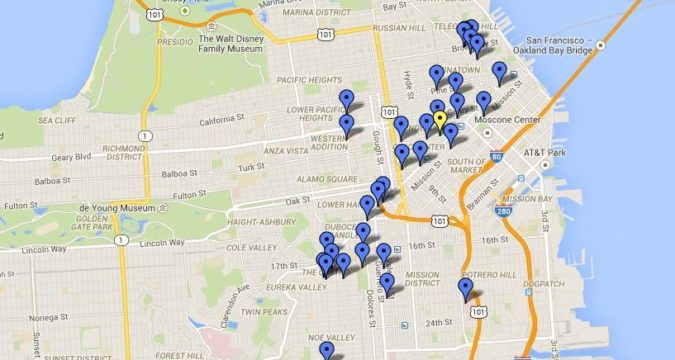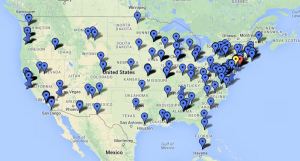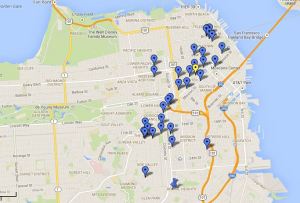

The National Park Service has identified hundreds of potential sites of LGBT interest for consideration for national landmark status, according to an article in this week’s Bay Area Reporter.
In May, the NPS announced the Lesbian, Bisexual, Gay and Transgender Heritage Initiative, which described their plans to identify places associated with LGBT history and solicited input from the public about appropriate locations to recognize.
Megan E. Springate, a social anthropology graduate student at the University of Maryland, has been working a National Historic Landmark LGBTQ Theme Study for the NPS to compile a list of sites on an interactive map. The map currently has over 300 color-coded locations: red indicates sites already listed on the National Register of Historic Places (NR) predominantly for their LGBT heritage; yellow indicates NH locations that are listed for multiple reasons that include mention of its LGBT heritage; and blue indicates sites that either have not yet been submitted, or are already listed for other reasons without mentioning their LGBT associations.
Sites already listed for other reasons may have their descriptions and plaques amended to describe its LGBT history. There are currently over 80,000 sites listed on the National Register. Local historian Gerard Koskovich told the Bay Area Reporter that dozens or even hundreds of these may also have LGBT significance in addition to the other reasons that led them to be already listed.
One LGBT site has already been designated as a National Historic Landmark (NHL) – a designation reserved for places having extraordinary significance to American history. That’s the Stonewall Inn in Greenwich Village, New York, the site of the 1969 riots that are widely touted as being the start of the modern gay rights movement.
Four other places of LGBT significance are designed on the National Register, including:
- The Dr. Franklin E. Kameny Residence in Washington D.C.
- The Cherry Grove Community House and Theatre on Fire Island in New York
- The James Merrill House in Connecticut
- The Carrington House on Fire Island

Springate’s map lists dozens of potential LGBT heritage sites in San Francisco, many already recognized by the City but not yet federally. One site listed for multiple reasons, including its LGBT heritage, is the site of Compton’s Cafeteria in the Tenderloin at the corner of Taylor and Turk Streets, where trans*and young gay people rioted in August of 1966 – three years before the Stonewall Riots in New York.
A few of the dozens of other San Francisco sites under consideration include:
- 440 Broadway – The site of Mona’s 440 Club, one of the first and most popular lesbian bars in the country
- 710 Montgomery Street – Site of the Black Cat Café, whose challenge of police raids led to a landmark California Supreme Court ruling saying that bars could not be shut down simply for serving homosexuals
- The Williams Building (693 Mission Street) – Headquarters of the Mattachine Society, an early gay rights organization, and the Daughters of Bilitis, the nation’s first lesbian rights organization
- 575 Castro Street – Harvey Milk’s camera store, Castro Camera, where he lived and launched his political career.
The NPS will collect public input through June 9, 2015.
(H/T – Bay Area Reporter)